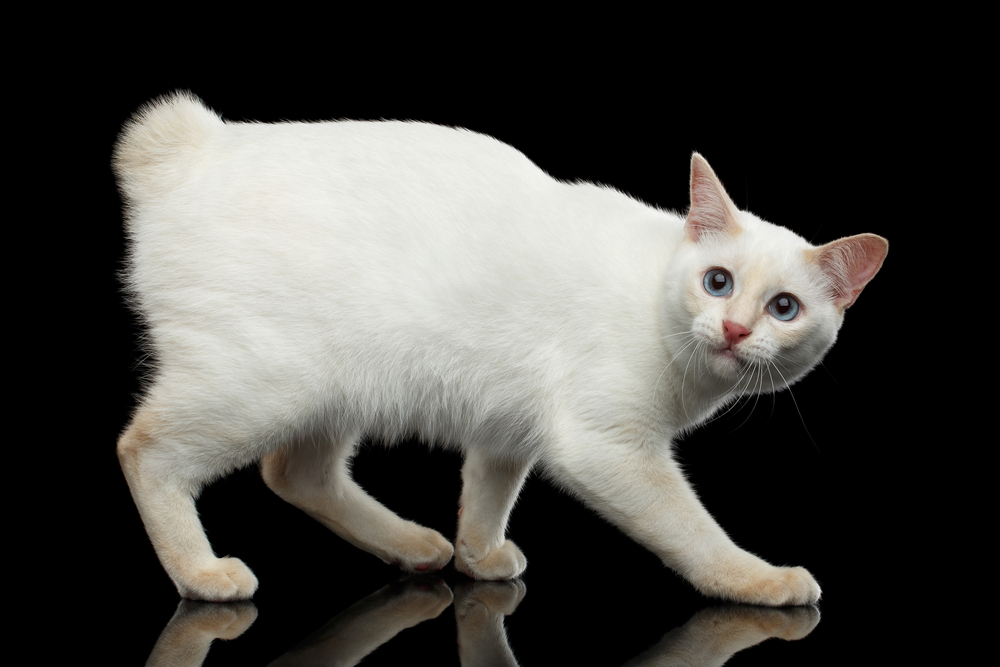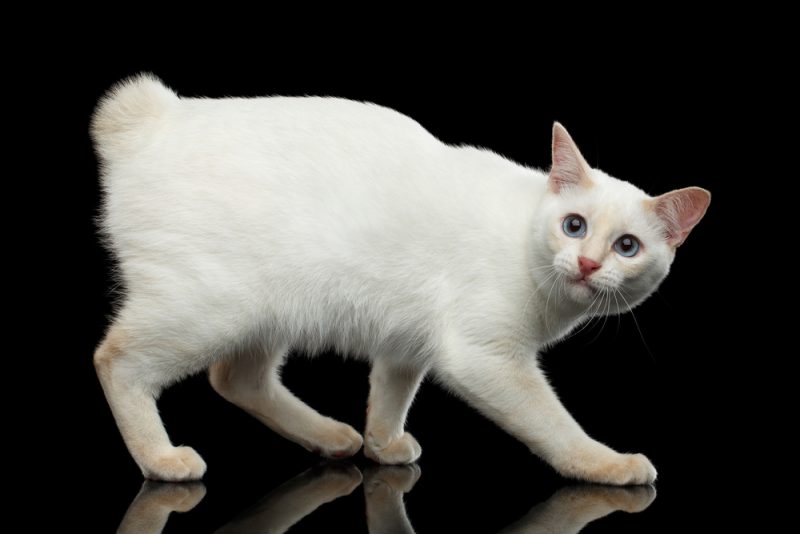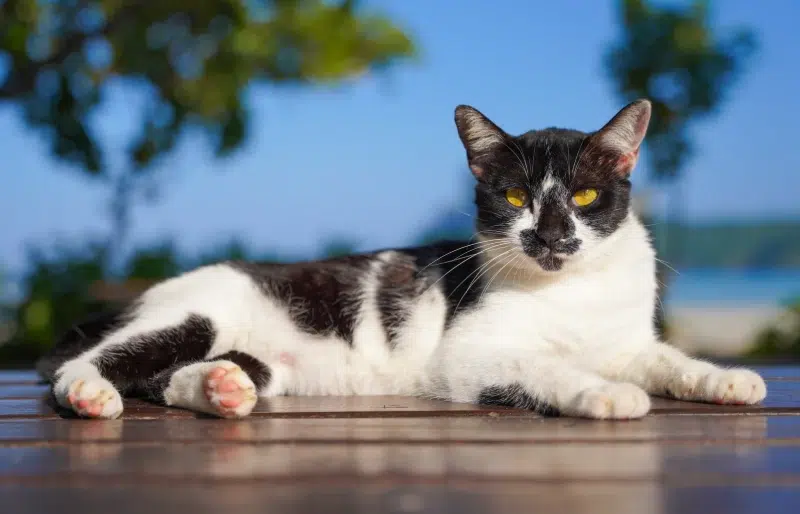Click to Skip Ahead
If you’ve been researching rare cat breeds, Mekong Bobtails are beautiful cats that look similar to Siamese, but what sets them apart is their cute pom-pom bobtail. In Russia, the Mekong Bobtail, which also used to be known as the Thai Bobtail, was considered cat royalty. So, if you find one of these cats, you’ll need to treat them accordingly!
Breed Overview
Height:
7-9 inches
Weight:
8-10 pounds
Lifespan:
15-18 years
Colors:
Pointed coat in a wide range of colors
Suitable for:
A great companion cat for active families looking for a playful cat breed
Temperament:
Sociable, friendly and curious, the Mekong Bobtail is energetic and entertaining
Mekong Bobtails are packed full of character. With a noisy meow, these feisty cats aren’t afraid to catch the attention of their owners and demand to be played with or fed. They’re often said to have a dog-like personality, so if you’re after an engaging and intelligent cat breed with plenty to say for themselves, you might find that the Mekong Bobtail suits your needs perfectly.
This breed isn’t just rare; it’s still classed as an “experimental” breed, so you might not know as much about them as better-known breeds. We have to say that you’re in for a treat! Join us as we find out everything about this engaging and intelligent breed.
Mekong Bobtail Cat Characteristics

Mekong Bobtail Kittens
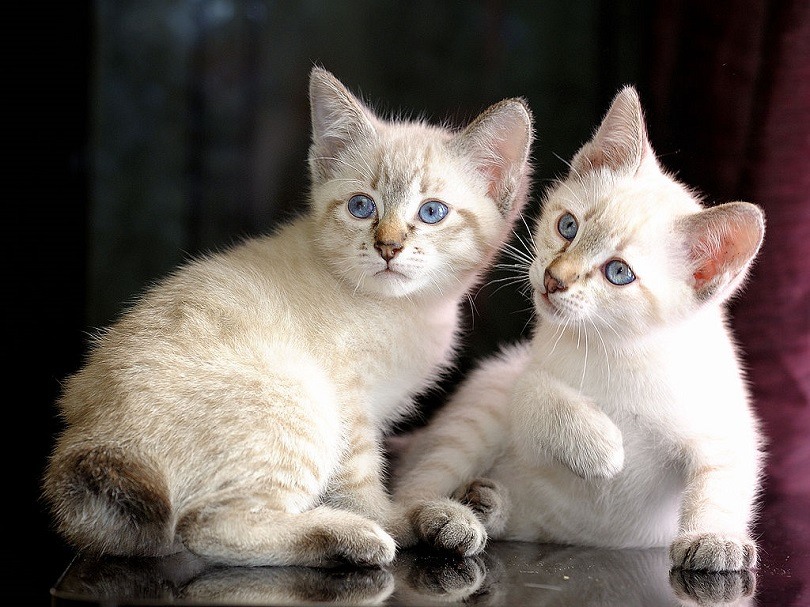
Mekong Bobtail kittens are so adorable that you might be smitten after just glancing through photos of available kittens online. We know we were! Despite that, it’s best to take your time to find out as much about the breed as you can before you bring a kitten home.
This breed isn’t what you’d call low maintenance in terms of the amount of attention and interaction they require from their owners. Mekong Bobtails are extremely intelligent and will soon become bored if they don’t get as much attention as they feel they deserve. That must be something to do with their royal blood! So, when you’re at home, expect to devote plenty of time to play with your Mekong Bobtail. If you’re out of the house, you’ll need to provide toys and games to keep them occupied; otherwise, they may well create all sorts of havoc in your absence!
Temperament & Intelligence of the Mekong Bobtail
The Mekong Bobtail is a smart and savvy cat, so owners have to make sure they can keep up with their cat’s demands! These cats aren’t known for their quiet natures, so if you’re looking for a peaceful companion that enjoys long relaxing naps, sometimes stretching for hours and hours, then the Mekong Bobtail is not for you!
Their active brains mean that they need plenty of entertaining, so whether you leave them a food puzzle to solve, spend the time encouraging them to catch a catnip mouse or teach them a new trick or two, Mekong Bobtails love plenty of interaction and challenge in their daily lives.
They can be loud, possibly thanks to their Siamese heritage, so they won’t be shy in coming forward if they’re hungry or you’re simply not giving them enough attention.
Are These Cats Good for Families? 👪
Mekong Bobtails are a great choice for families. As far as they’re concerned, the more people to keep them entertained, the better! Their curious nature means they often love to follow their owners around the house and will diligently watch you as you carry out your chores. Of course, if they feel as though you should be paying them more attention, they won’t hesitate to let you know!
Their outgoing and friendly personality means they get on well with most children and will enjoy being trained to complete all sorts of clever tricks.
Due to their sociable natures, Mekong Bobtails don’t enjoy being left alone for long periods of the day regularly. So, if all family members are going to be out most days, the Mekong may become lonely and bored.
Does This Breed Get Along With Other Pets?
Due to their outgoing and confident nature, the Mekong Bobtail is usually well suited to life in a multi-pet household. As well as getting along with other cats for the most part, they also make good companions for dogs.
As with any breed of cat, make sure to keep introductions with other pets short and controlled to start with.
Things to Know When Owning a Mekong Bobtail:
Owning a charismatic and energetic Mekong Bobtail isn’t for the faint of heart! While it’s certainly true that they’ll capture your affection if you’re the right sort of family, they’re also a breed that will demand a certain amount of attention. Here are a few important things to bear in mind before you take the plunge.
Food & Diet Requirements 
Mekong Bobtails are a healthy and relatively low-maintenance breed when it comes to their food. As long as you select a good quality cat food made with a high percentage of protein, they should thrive. Remember that settling into a new home can be a stressful time for kittens, so if you can keep them on the same brand of food that they were eating at the breeder’s, there’s less chance of them suffering an upset tummy from a sudden transition.
As Mekong Bobtails are more active than many breeds, you might find that you need to feed them more to keep up with their busy lives! Your veterinarian will be able to help to devise a feeding program that makes sure your cat gets exactly the right amount of food for their weight and activity levels.
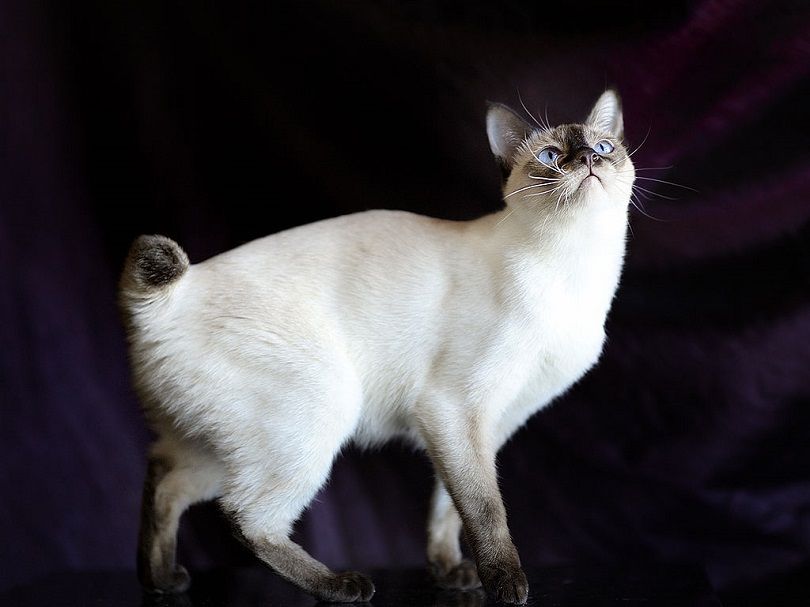
Exercise 🐈
As we’ve already touched on, the Mekong Bobtail is an active breed. They’ll do best when allowed to play and exercise for a significant portion of the day. Depending on your cat, this may well be around dawn and dusk.
It’s a good idea to provide your Mekong Bobtail with a range of toys designed to challenge them both mentally and physically. From tall cat trees to food puzzles and electronic toys for them to pounce on, these cats will love them all.
Training 🧶
Mekong Bobtails are excellent cats to train. Their intelligence and curiosity are the perfect combinations for keeping them engaged and interested as you teach them a variety of tricks.
From playing fetch to learning to wave, your Mekong Bobtail will take to it all and most likely impress you with how quickly they can learn!
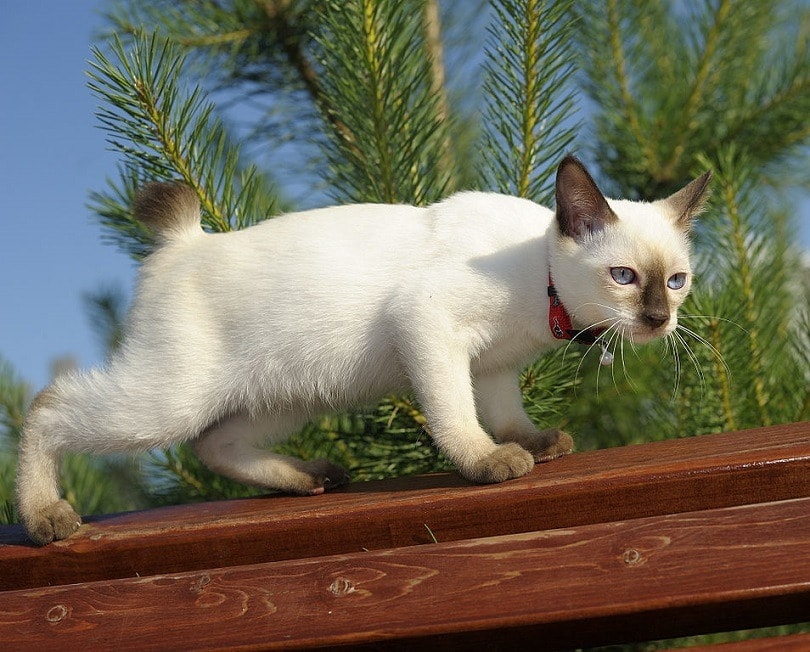
Grooming ✂️
The Mekong Bobtail’s coat is short and lies close to their bodies, with very little undercoat. As such, a quick brush once a week will be enough to keep them looking smart and glossy.
As with all cat breeds, make sure you take time to trim your cat’s nails, as well as check their ears and teeth regularly.
Something that sets the Mekong Bobtail apart from many other cat breeds is that their rear claws do not retract.
- Related Read: Unique Cat Breeds With No Tails
Health and Conditions 🏥
Mekong Bobtails are a healthy breed. At the moment, potentially in part due to their rareness, there aren’t any examples of either serious or minor conditions that they suffer from with any regularity.
- None known
- None known
Male vs. Female
Perhaps now you’ve read this far, you’re convinced that the Mekong Bobtail is going to be the perfect cat breed for you and your family. Now the only question that remains is whether you choose a female or male kitten.
Due to their rarity, you may not get a choice in the matter. Some breeders will have reservations for Mekong kittens in advance. In any case, it’s usually best to let a kitten’s character be the guide as to whether they’re going to fit into your household, rather than the fact that they’re a boy or girl.
As with many cat breeds, male Mekong Bobtails will be at the larger end of the weight and size scale for this breed. Females will be smaller and lighter.
3 Little-Known Facts About Mekong Bobtail Cats
1. They’re still classed as an experimental breed in the U.S.A.
While the Mekong Bobtail is recognized as a breed by the World Cat Federation (WFA), they’re still classed as experimental by both The International Cat Association (TICA) and the Cat Fancier’s Association (CFA). This means breeders are working with these associations to get the breed fully recognized in the U.S.A.
2. The Mekong Bobtail is named after a river.
Historically, the Mekong Bobtail was known as the Thai Bobtail and was a natural cat breed found in countries bordering the Mekong River. In the 19th century, the breed was imported to Russia, when the King of Siam, Chulalongkorn, gifted around 200 cats to the Emperor of Russia, Nicholas II. It was at this point that a more formal breeding program took place.
It’s thought that Mekong Bobtails were crossed with Siamese cats, as well as possibly other bobtail breeds, to create the type of cat we see today. Their similarity to Siamese cats is quite pronounced, thanks to their pointed coats and piercing blue eyes. There’s no confusion when they stand up and you see that distinctive pom-pom tail, though!
The bobtail is, of course, one of their defining characteristics. The breed standard states that the tail should consist of at least three vertebrae but must not be longer than a quarter of the cat’s body length. The tail can be kinked or curved.
3. They were only accepted into the WFA in 2004.
While this breed is quite ancient, they’ve only been formally recognized relatively recently. In Europe and Asia, their popularity started to increase in the 1980s. Despite this, it wasn’t until 1994 that a breed standard was written. The Mekong Bobtail was officially accepted into the World Cat Federation’s (WFA) books in 2004. It was at this point that their name was also changed from “Thai Bobtail” to “Mekong Bobtail.”
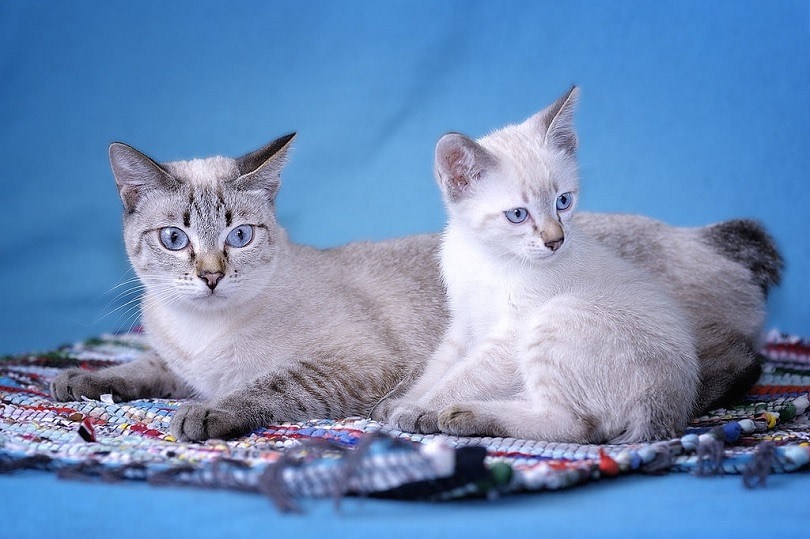
Final Thoughts
We hope you’ve enjoyed learning about this rare breed! While the Mekong Bobtail is certainly not a cat breed that everyone knows about, they have plenty of amazing positive character traits! Their intelligence, energy, and playful nature make them perfect for active families who are looking for a cat that will make their presence felt.
If you’re looking for a laid-back and low-maintenance cat that won’t mind if everyone is out at work all day, then the Mekong might not be for you. They love spending time with their families and much prefer someone to be around all day, most likely so they can pester you to play with them!
Featured Image Credit: Seregraff, Shutterstock

